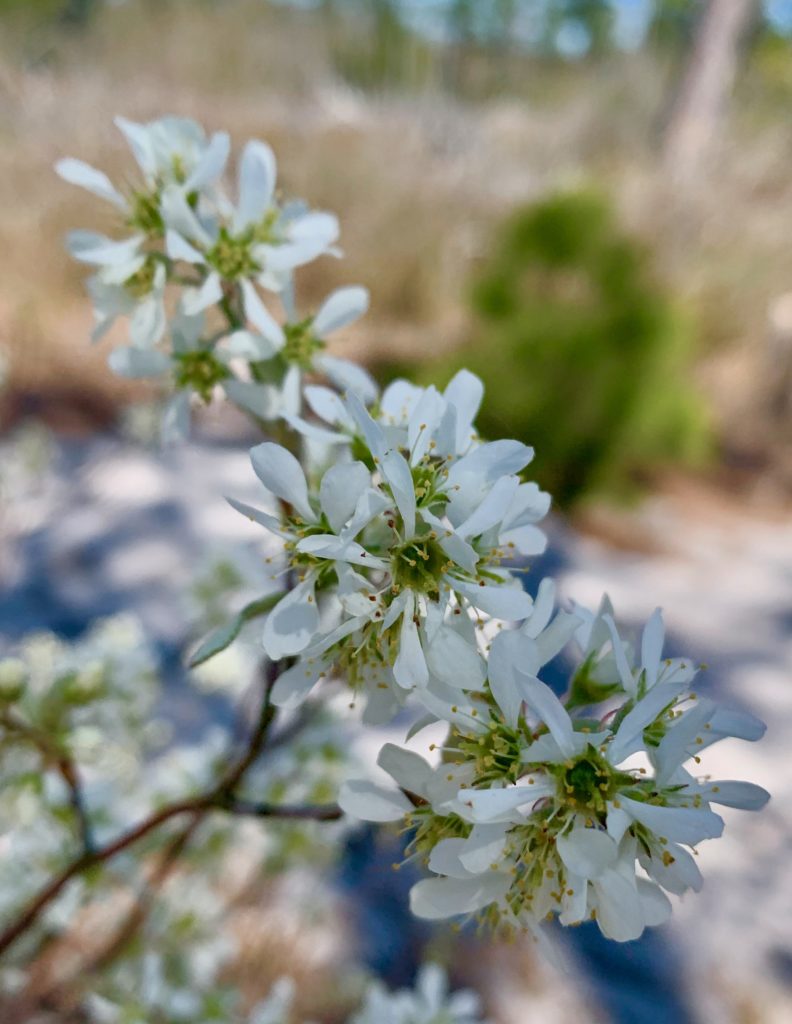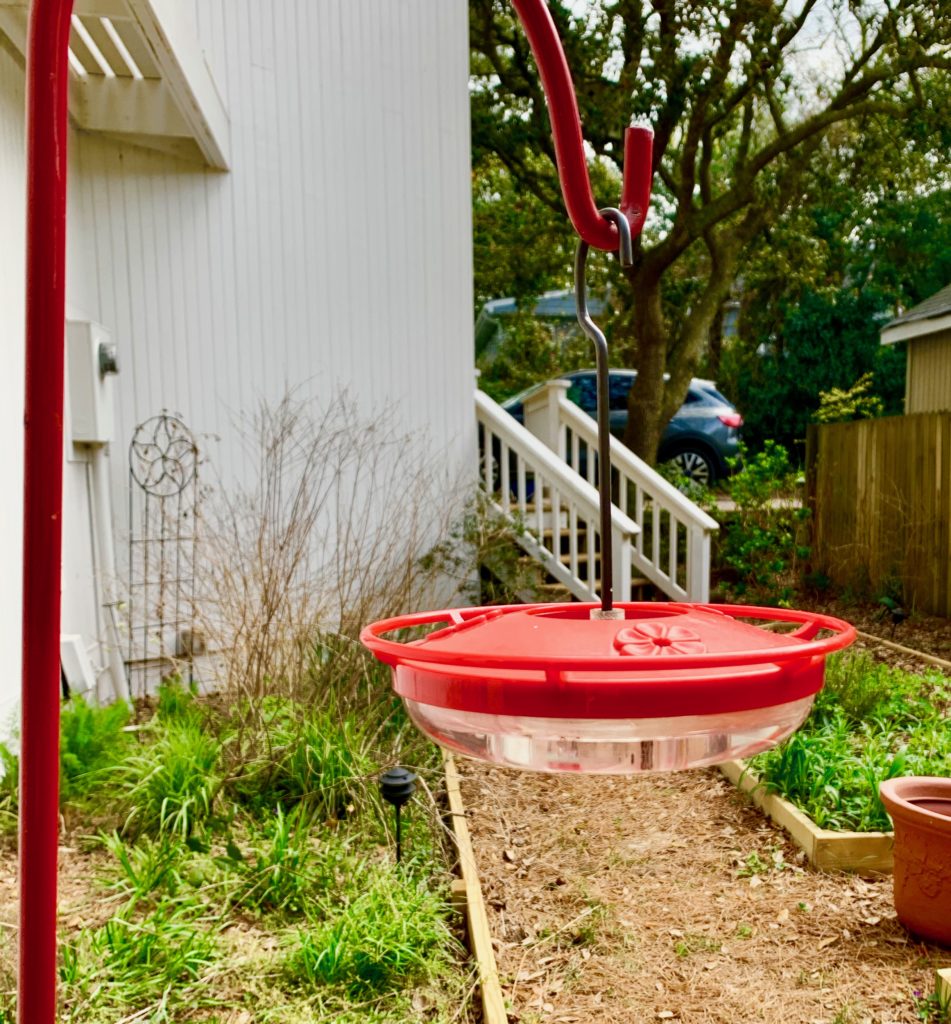By Mary Reid Barrow
They call the little white tree that’s blooming now in First Landing State Park a shadbush.
Amelanchier canadensis got its common name of shadbush along the coast because the slightly fragrant native tree comes into flower when the shad fish run up river to spawn.
You also may have heard this little early spring bloomer called a serviceberry, a name it acquired in the mountains. There, its bloom time came after the winter thaw when the roads were clear enough for folks to get out to Sunday church services
Because it is one of the first natives to bloom, the shadbush was like a calendar tree for many. Around here the shadbush blooms also mark the arrival of our hummingbirds. Maybe we could call it the hummingbird tree too!
The tree is blooming in the park right on time. A little male hummingbird flew through our neighborhood last week. He paused to look for the feeder at a neighbor’s house and she hung her feeder up right away.
Other hummers are arriving or taking a pit stop at homes across the city, say the folks at Wild Birds Unlimited.
So put your feeders out this weekend. Don’t make the tired little migrators wait. The formula: one cup of sugar to four cups of water. Stir until blended and keep in the fridge.
A feeder full of energy-giving sugar water gives a welcome boost to early arriving hummers and is even more vital this year because of the unusually chilly past few days.
While the weather is still cold, you can change your feeder every five days or so, but when it warms up, wash and change your feeders every two to three days.
Hummer visits, first the males and then the females, will be sporadic until July when the youngsters leave the nest. Then your feeders will be become a merry-go-round of activity.
In the meantime, while the hummers nest, the shadbush begins to leaf out. Its blooms give way to tiny green berries that ripen to deep purple over the summer. The berries provide their own sustenance to birds a bit bigger than hummers, as they head out on their fall migration.
Folks in Knotts island often see hummers as early as St. Patrick’s Day, according to islander Jane Brumley, but in the northern part of the city, April 1 is a good day to mark on your calendar.
Or just remember! Put your feeders out when the shadbush blooms!
Do you have a favorite tree or plant with a story to tell? What relationships have you observed between plants and critters? Who eats whom? Who has babies where? Send an email to maryreid@lrnow.org

